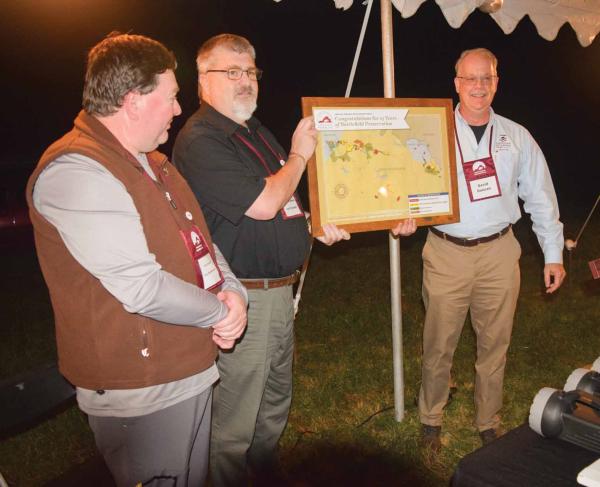The Overland Campaign

By the spring of 1864, the Civil War was entering its fourth year. The North had made some notable progress, but still it was not enough. President Abraham Lincoln realized that if he was going to remain in office and reunify the nation, he needed victories and he needed them quickly. For that, he turned to General Ulysses S. Grant. Lincoln appointed Grant General-in-Chief and placed him in charge of the Union armies throughout the country in February 1864.
Grant planned a three-pronged attack in Virginia. As part of this plan, he would personally accompany the Army of the Potomac to attack Robert E. Lee's Army of Northern Virginia. The Overland Campaign opened on May 5, when the Union Fifth Corps encountered Confederate troops on the Orange Turnpike. For two days, men fought in the dense Wilderness. Confederate General James Longstreet's corps arrived to turn the tide on May 6, but the attack sputtered when Longstreet fell, wounded by friendly fire. The battle was a tactical draw, but Grant would not retreat. His men cheered as they continued on to Spotsylvania Court House.

For the next two weeks, the armies dueled along the Spotsylvania front. After a small force led by Union Colonel Emory Upton temporarily broke through the Confederate works on May 10, Grant tried a similar attack on a larger scale. Federals launched the assault at dawn on May 12. For the next 22 hours, men fought in savage, hand-to-hand fighting, the worst at a slight bend known as the "Bloody Angle". Grant prodded at the Confederate line over the next few days, but to no avail. On May 20, he sent the Second Corps on a night march toward Hanover Junction, hoping to lure Lee out of his trenches.

Lee responded by taking up a defensive position on the south side of the North Anna River. After Union forces successfully pushed back Confederate defenders on May 23, Lee formed his line into an "inverted V," with the tip situated along the North Anna River at Ox Ford. For Grant to attack, he would have to divide his army into three parts. Confederates repulses Federal attacks on May 24, but Lee, sick with dysentery, failed to strike a decisive blow. Grant, realizing the trap Lee had set, made another turning movement, this time heading to Totopotomoy Creek.
For several days, forces skirmished along the creek bed. On May 31, General Philip Sheridan's Federal cavalry seized the vital crossroads of Old Cold Harbor and threw back an attack from Confederate infantry the following day. With the arrival of Union infantry at Cold Harbor, Grant attacked the Confederate line with some success on the evening of June 1. Confederates fortified their position with seven miles of powerful entrenchments. At dawn on June 3, Grant ordered a massive assault on the Confederate works, but the attack moved forward piecemeal and with little success. The Federals suffered an estimated 6,000 casualties, most of them in less than an hour. It was a bloody end to a brutal campaign - in total, the month of fighting resulted in 55,000 Union and 33,000 Confederate casualties. After collecting their wounded in a temporary truce on June 7, the Union army left its entrenchments in the darkness on June 12 and set off toward the James River and Petersburg.

Related Battles
2,600
1,600


